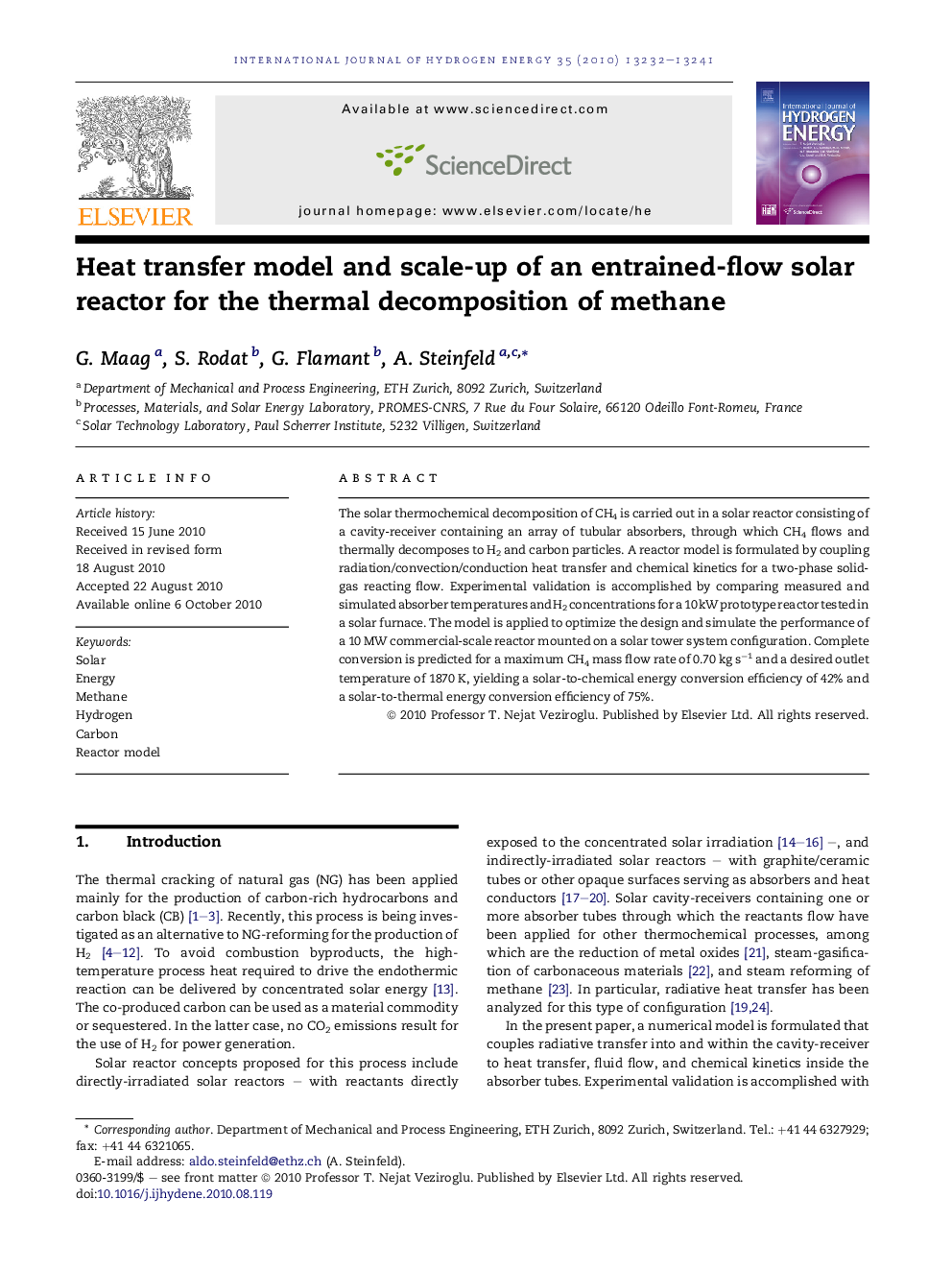| Article ID | Journal | Published Year | Pages | File Type |
|---|---|---|---|---|
| 1282684 | International Journal of Hydrogen Energy | 2010 | 10 Pages |
The solar thermochemical decomposition of CH4 is carried out in a solar reactor consisting of a cavity-receiver containing an array of tubular absorbers, through which CH4 flows and thermally decomposes to H2 and carbon particles. A reactor model is formulated by coupling radiation/convection/conduction heat transfer and chemical kinetics for a two-phase solid-gas reacting flow. Experimental validation is accomplished by comparing measured and simulated absorber temperatures and H2 concentrations for a 10 kW prototype reactor tested in a solar furnace. The model is applied to optimize the design and simulate the performance of a 10 MW commercial-scale reactor mounted on a solar tower system configuration. Complete conversion is predicted for a maximum CH4 mass flow rate of 0.70 kg s−1 and a desired outlet temperature of 1870 K, yielding a solar-to-chemical energy conversion efficiency of 42% and a solar-to-thermal energy conversion efficiency of 75%.
